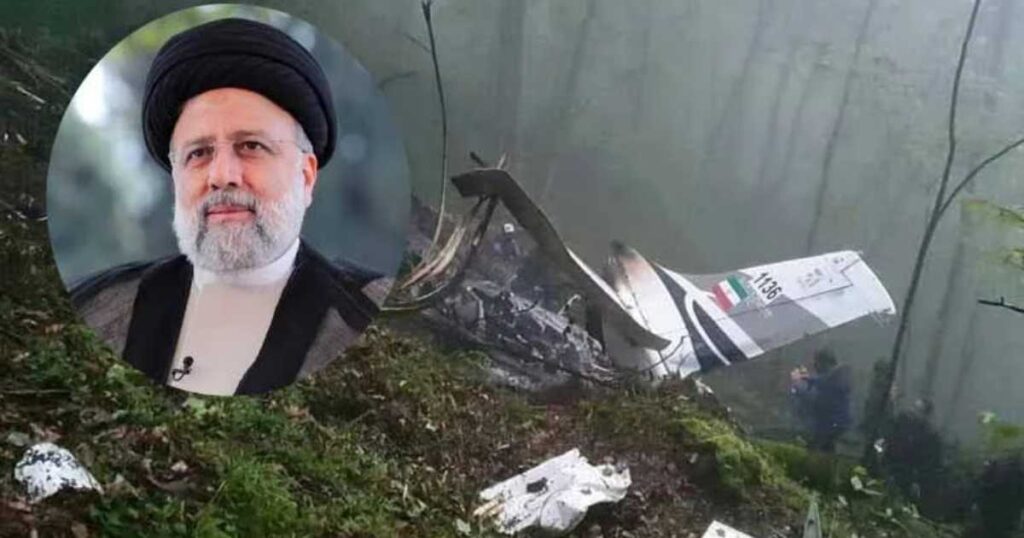Iranian President Ebrahim Raisi, along with the country’s foreign minister and several other officials, were found dead on Monday following a helicopter crash in a foggy, mountainous region in northwest Iran, state media reported. Raisi was 63 years old.
The crash occurred amidst ongoing regional tensions fueled by the Israel-Hamas conflict, during which Raisi, under the guidance of Supreme Leader Ayatollah Ali Khamenei, had recently ordered an unprecedented drone-and-missile attack on Israel. Raisi’s tenure saw Iran enrich uranium to near weapons-grade levels, escalating tensions with Western nations, while also supplying drones to Russia for its war in Ukraine and arming regional militia groups.
Domestically, Iran has been grappling with years of mass protests against its Shiite theocracy, driven by economic hardships and demands for women’s rights, making this incident particularly sensitive for Tehran.
State television did not immediately provide a cause for the crash, which took place in Iran’s East Azerbaijan province. Among the deceased was Iranian Foreign Minister Hossein Amirabdollahian, aged 60, as well as the governor of East Azerbaijan province, other officials, and bodyguards, according to the state-run IRNA news agency.
Early Monday morning, Turkish authorities released drone footage showing a fire in the wilderness, suspected to be the helicopter wreckage. The footage’s coordinates indicated the fire was located about 20 kilometers south of the Azerbaijan-Iranian border on a steep mountain.
Footage from IRNA showed the crash site across a steep valley in a green mountain range, with soldiers speaking in the local Azeri language confirming the wreckage’s location.
Supreme Leader Khamenei had urged the public to pray for Raisi and the other officials’ safe return on Sunday night, expressing hope for their well-being.
“We hope that God the Almighty returns the dear president and his colleagues in full health to the arms of the nation,” Khamenei said, receiving an “amen” from the worshipers he addressed. However, he assured that Iran’s government would continue its operations. Under the Iranian constitution, the vice president assumes the presidency with Khamenei’s approval, and a new presidential election would be held within 50 days if the president dies.
First Vice President Mohammad Mokhber had already begun receiving calls from officials and foreign governments in Raisi’s absence. An emergency cabinet meeting was held, and a statement was issued, pledging to follow Raisi’s path and ensure the country’s management continues smoothly.
Raisi, a hard-liner and former head of the judiciary, was considered a protégé of Khamenei. Analysts had speculated that he might succeed the 85-year-old supreme leader after Khamenei’s death or resignation.
With Raisi’s passing, Mojtaba Khamenei, the 55-year-old son of the supreme leader, is the only other suggested successor. However, there are concerns about the position becoming hereditary, particularly given the Islamic Revolution’s overthrow of the Pahlavi monarchy in 1979.
Raisi won the 2021 presidential election, which had the lowest turnout in the Islamic Republic’s history. He was sanctioned by the U.S. for his role in the mass execution of thousands of political prisoners in 1988.
Under Raisi, Iran enriched uranium to near weapons-grade levels and impeded international inspections. The country also armed Russia in its war against Ukraine and launched a large-scale drone-and-missile attack on Israel during its conflict with Hamas. Iran continued to support proxy groups in the Middle East, including Yemen’s Houthi rebels and Lebanon’s Hezbollah.
Mass protests have persisted in Iran, most notably following the 2022 death of Mahsa Amini, who was detained for allegedly not wearing a hijab properly. The subsequent crackdown on protests resulted in over 500 deaths and more than 22,000 detentions.
In March, a United Nations panel found Iran responsible for the “physical violence” leading to Amini’s death.
Raisi is the second Iranian president to die in office; President Mohammad Ali Rajai was killed in a bomb blast in 1981 during the turbulent post-revolution period.

